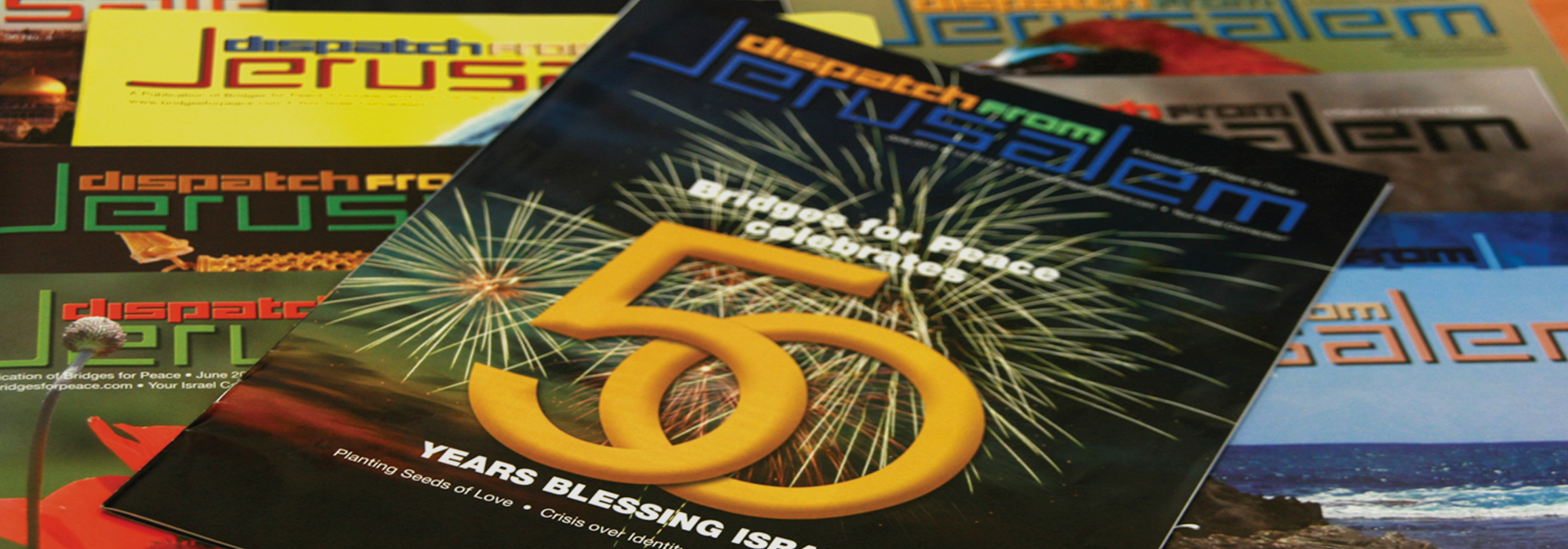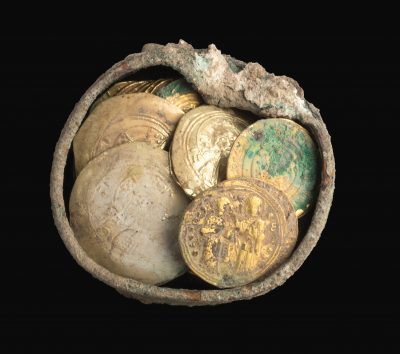
 Excavations continue at Caesarea as archaeologists uncover some of the most exciting finds of recent times. With the financial backing of the Edmond de Rothschild Foundation, some US $40 million has been invested in uncovering hidden treasures under the ground and in the sea.
Excavations continue at Caesarea as archaeologists uncover some of the most exciting finds of recent times. With the financial backing of the Edmond de Rothschild Foundation, some US $40 million has been invested in uncovering hidden treasures under the ground and in the sea.
Caesarea has connections with many periods of history, including the Roman and Crusader periods. The latest incredible finds are from the Crusader period 900 years ago. Archaeologists from the Israel Antiquities Authority (IAA) and the Israel Nature and Parks Authority (INPA) have found a cache of gold coins hidden between two stones in the side of a well. The well was located in a house in a neighborhood dating to the Abbasid and Fatimid periods.
According to the IAA directors of the excavation, Dr. Peter Gendelman and Mohammed Hatar, the coins in the cache date to the end of the 11th century, thus making it possible to link the treasure to the Crusader conquest of the city in 1101. At the time, most of the people in Caesarea were massacred by the army of Baldwin I. Also known as Baldwin of Boulogne, he was the first count of Edessa from 1098 to 1100 and the second crusader ruler and first king of Jerusalem from 1100 until his death in 1118. The owner of the treasure and his family likely perished in the massacre or were sold into slavery, and thus not able to retrieve the gold.
This latest find was discovered close to the location of two other finds from the same period. The first was a pot consisting of gold and silver jewelry found in the 1960s. The second was a collection of bronze vessels found in the 1990s. These treasures are currently on display in the Israel Museum in Jerusalem.
This latest coin cache is a unique combination of coins not yet seen in Israel. There are two types of coins, according to IAA coin expert Dr. Robert Kool: 18 Fatmid dinars—the standard local currency at the time—and six Byzantine imperial gold coins. One or two of the gold coins were equivalent to the annual salary of a simple farmer, so it appears that whoever deposited the cache was rich or involved in commerce.
Source: Excerpts from an article by Edgar Asher, Ashernet
Photo Credit: Yaniv Berman/Ashernet IAA
All logos and trademarks in this site are property of their respective owner. All other materials are property of Bridges for Peace. Copyright © 2024.
Website Site Design by J-Town Internet Services Ltd. - Based in Jerusalem and Serving the World.